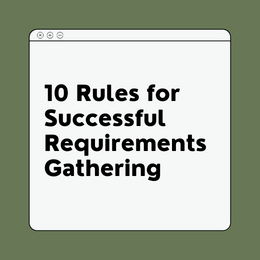Have you always wanted to build a team of high performing members, but you’re always get failed?
I’ve been fortunate enough to have built and led high performing teams over the course of my career. And I’ve learned that there are 7 components to building and running a high performing team.
In this video, I’ll share these 7 elements that you need to bring together to turn your team into a high-performing team.
These elements seem very common but when it comes to execution – trust me most of the companies failed.
- Set Direction
You have to set direction. You have to lay out a vision for what your organization’s going to be three to five years from now.
Then, you also have to help the team understand what is your mission? Why does the organization exist? Where do you fit in the broader company?
Once you’ve articulated that vision and that mission, try to think more broadly and think about your customers and how you can involve them in a shared purpose, how the two of you can achieve more than just the team alone.
After all, Identify the strategy for how you’re going to achieve that vision.
Once you’ve set that direction, the next step is:-
2. Gather and Deploy Resources:
- Articulate Needs: You have to articulate your resource needs. What type of resources do you need and why do you need them?
- Make a Business Case: And then you have to make a clear and compelling business case to get those resources allocated to you and your team.
Once you’ve identified those required resources, you have to assemble the team.
3. Assemble the Team
- Skills: You have to define the skills that are relevant and necessary for achieving your vision.
- People: You have to find the people who are going to help you achieve that vision, the people with the right set of skills.
- Build Chemistry & Trust Between Team: And once you’ve assembled them, you have to think through as a leader how are you going to build chemistry between those individuals? Build those bonds of trust between the team members and each other as well as that bond of trust between them and you as their leader.
4. Allocate and Prioritize the work
- Balance Workload Across Team Members: You then have to allocate the work and prioritize your efforts. You’ll have to think through I have all this work, how am I going to balance it across the members of my team?
- Set Attainable Goals: How am I going to set goals for them that are realistic yet are achievable and stretch the organization forward?
- Then lastly, prioritize your efforts so you focus on the most important things and execute them well.
5. Execute The Plan
Once you have those priorities set, you have to execute the plan, which includes:
- Make Decisions: That’s why you’re put at the head of that team, is to make those tough calls.
- Measure The Results: And then once you’ve made a decision, measure the results, and adjust accordingly.
6. Motivate People
Next, you have to think through your people and how are you going to motivate them, inspire them, get the best out of them every single day.
- Empower Team: Which includes thinking through how are you going to empower them to do their jobs?
- Authority: How are you going to give them the authority to do what they need to do? Enable them to make decisions.
- Feedback: Then providing feedback to them on their performance.
- Resolution: Resolve any conflict that may exist between them and other team members or them and you and make sure things run smoothly.
7. Develop the Team you need to take a longer-term view of developing your people.
- Build Skills: How are you going to build their skills?
- Build Depth: How are you going to build depth in terms of the capabilities of the people on your team and build that bench strength?
- Create Stretch Strength: How are you going to create stretch assignments where people can grow into better performers than they currently are?
All these 7 steps need to be clear, brief, and understandable by all employees at all levels of your organization. It should also be clear enough that new employees or an outsider can come in, and understand I know how this team contributes to the broader whole.
So once you’ve looked at those seven elements of building a high-performing team, and if you’re able to execute against each one, the likelihood of you delivering on that promise of a high-performing team to the organization goes up dramatically.

